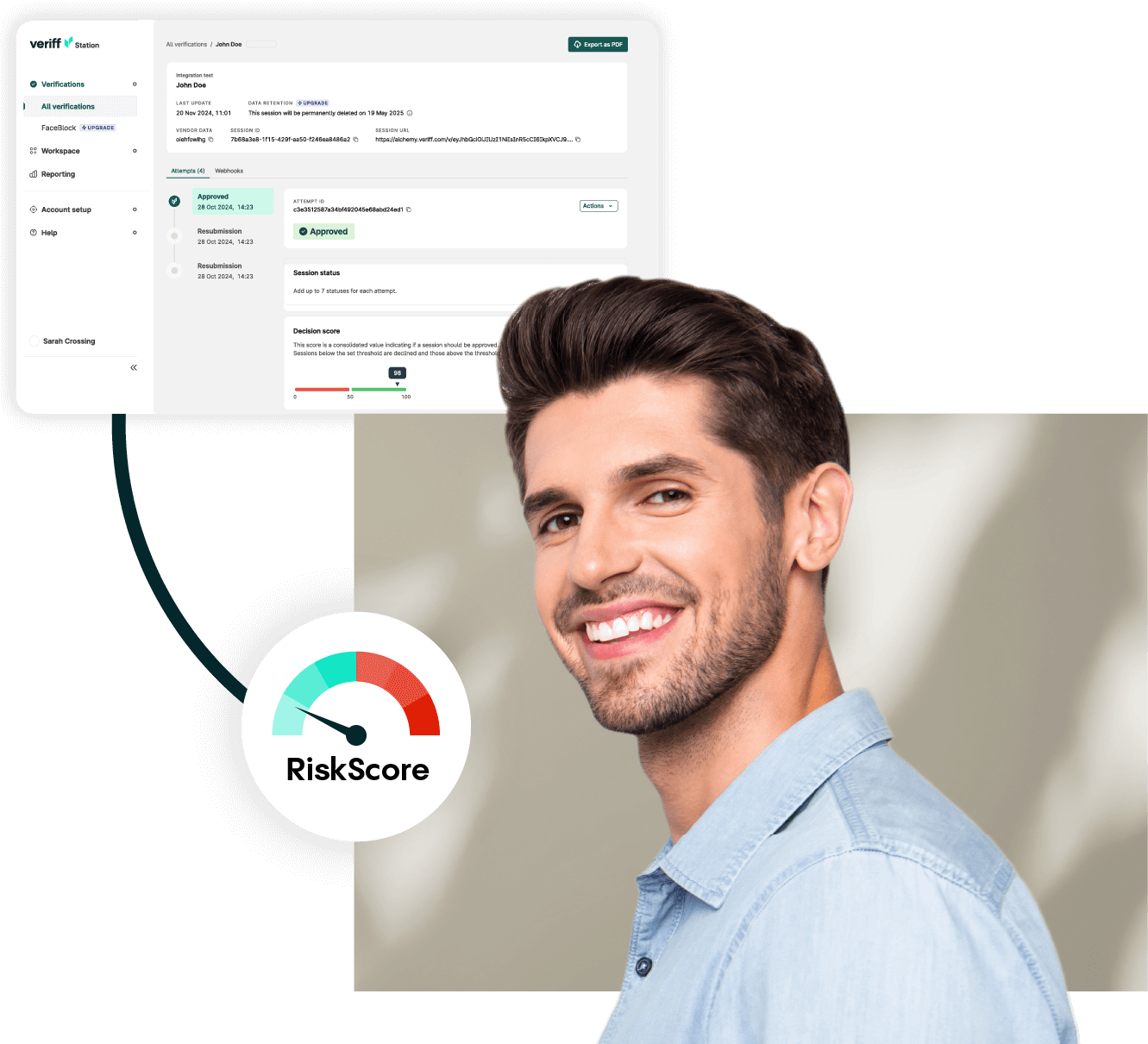
FRAUD PROTECT

Block fraud before it happens. Blending advanced machine learning and deep fraud expertise, our software spots threats early for industry-leading fraud prevention without adding friction for trusted users.

FRAUD INTELLIGENCE

Strengthen your fraud prevention with actionable risk insights. Our software delivers powerful analytics tools plus a consolidated RiskScore to enable better investigation and decision-making.
>0
%
verified on the first try
>0
second verification
>0
K+
documents supported
>0
languages & dialects

Start building with Veriff for free
Your journey toward faster, more accurate identity verification starts here.







